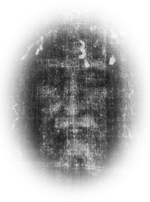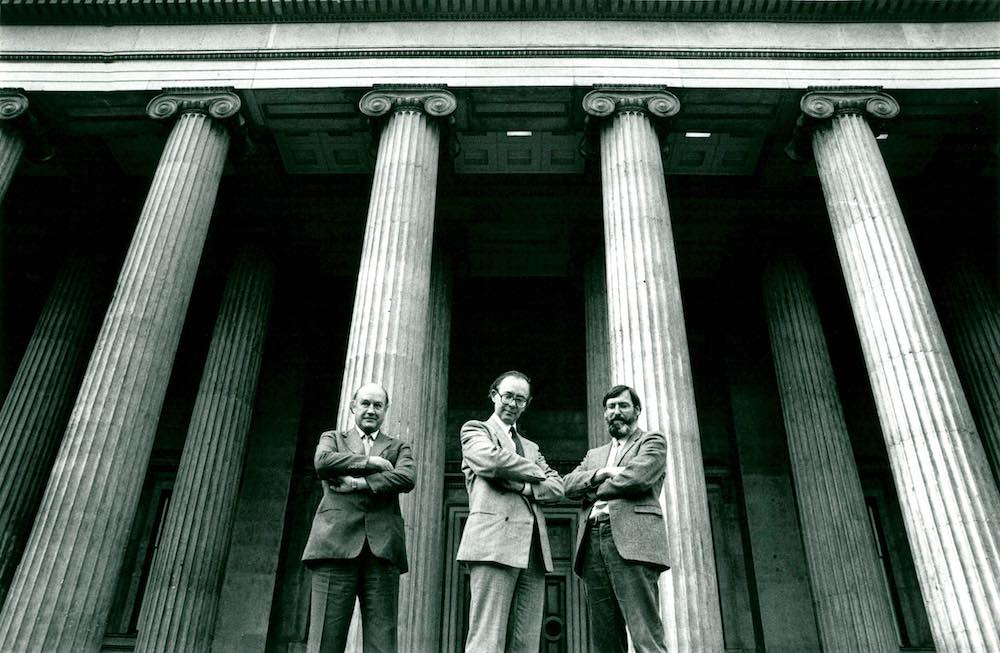
Who Can He Be?
The Challenge
Challenge to the British Museum
In 1988 The British Museum was asked by the Church authorities responsible for the Turin Shroud to act as independent overseers to a proposed Carbon-14 test of material from the cloth to ascertain its true age. The Museum agreed to this and appointed its then Head of Research, Dr. Michael Tite, to oversee this on their behalf.
The British Museum stipulated five protocols they considered necessary if the test was to be conclusive. For various reasons, none of these protocols could be implemented. This should have meant that the test should not have proceeded until this state-of-affairs could be rectified. However, pressure from the C14 labs selected for the test persuaded the British Museum to proceed with the test anyway.
The film “Who Can He Be?” chronicles what then occurred, and the resulting conclusion announced under the auspices and authority of the British Museum from the steps of their own building that the Shroud was a medieval forgery “faked up and flogged off by some medieval forger.”

Despite a wealth of other evidence suggesting the Shroud could well be authentic, from that day of their damning verdict to this, the Shroud has virtually disappeared from public awareness. If the Shroud is such a crude forgery, it is reasonable to expect the British Museum to be able to replicate what this alleged medieval forger achieved and demonstrate the veracity of their conclusion in the face of this counter evidence.
To encourage them to make good on their claim, the producers of the film Who Can He Be? issue a challenge to the British Museum to replicate the image by offering a reward of US$1,000,000 (one million US dollars) if they succeed. The Shroud’s image has been analysed in detail and a very specific list of characteristics identified in peer reviewed publications and are listed below.
If the Museum takes up this challenge the producers will supply a number of linen cloths of the Shroud’s dimensions to the Museum to give them the optimum opportunity of success.
Below is the list of known and verified characteristics of the image that must be reproduced.
Depth of colour penetration equal to 0.2 micrometre, which corresponds to the thickness of the primary cell wall of the linen fibre. The cellulose of the medulla is colourless.
There must be a half tone effect, where the shading of the image is due to the areal density of the fibres that each have the same colour, i.e., the same RGB value. This variation should be such that when rendered as a 3D profile based on the intensity of the shading, should produce an accurately contoured 3D image of a human form.
The fibres are uniformly coloured round their cylindrical surface.
The front and back images of the body show almost the same colour intensity, i.e., we cannot appreciate which image is more contrasted, front or back.
There must be no visible trace of any paint, ink, dye, stain, or pigments.
The bloodstains must match the pattern seen on the Shroud of Turin, which are composed of hemoglobin, bilirubin, immunoglobulin, and albumin. (Using human or primate blood is not necessary.) In addition, bloodstains associated with the wrist wound, side wound, back of head, and off the body from the foot show areas of ultraviolet fluorescence characteristic of the separation of blood and serum.
When light and shade are reversed as in a photographic negative, the image must appear as a realistic and anatomically accurate representation of a body.
The images must be permanent on the linen for a period of at least one year.
Only known medieval techniques and substances can be used.
The producers have limited the chosen characteristics to those which can easily be attested and adjudicated by a neutral panel.
The Museum have six months from Easter Sunday, 2023 (April 9th) to either accept or decline this challenge. Upon their acceptance, the producers will place $1,000,000 in escrow pending the results.
In accepting the Challenge, the Museum will also grant the Producers the exclusive right to film for both record and dissemination the planning and execution of the process from start to finish.
The Museum has six months from the 9th April 2023 to accept or refuse the Challenge. No response will be taken as an indication that the Challenge has not been accepted. An appeal for an extension by the Museum will be considered if it shows evidence of application to try and meet the Challenge.
The Challenge is dated 9th April 2023. (Easter Sunday).
Performco Ltd. Town Hall, Penn Road, Beaconsfield, Bucks HP9 2PP
Copyright © Performco Ltd.